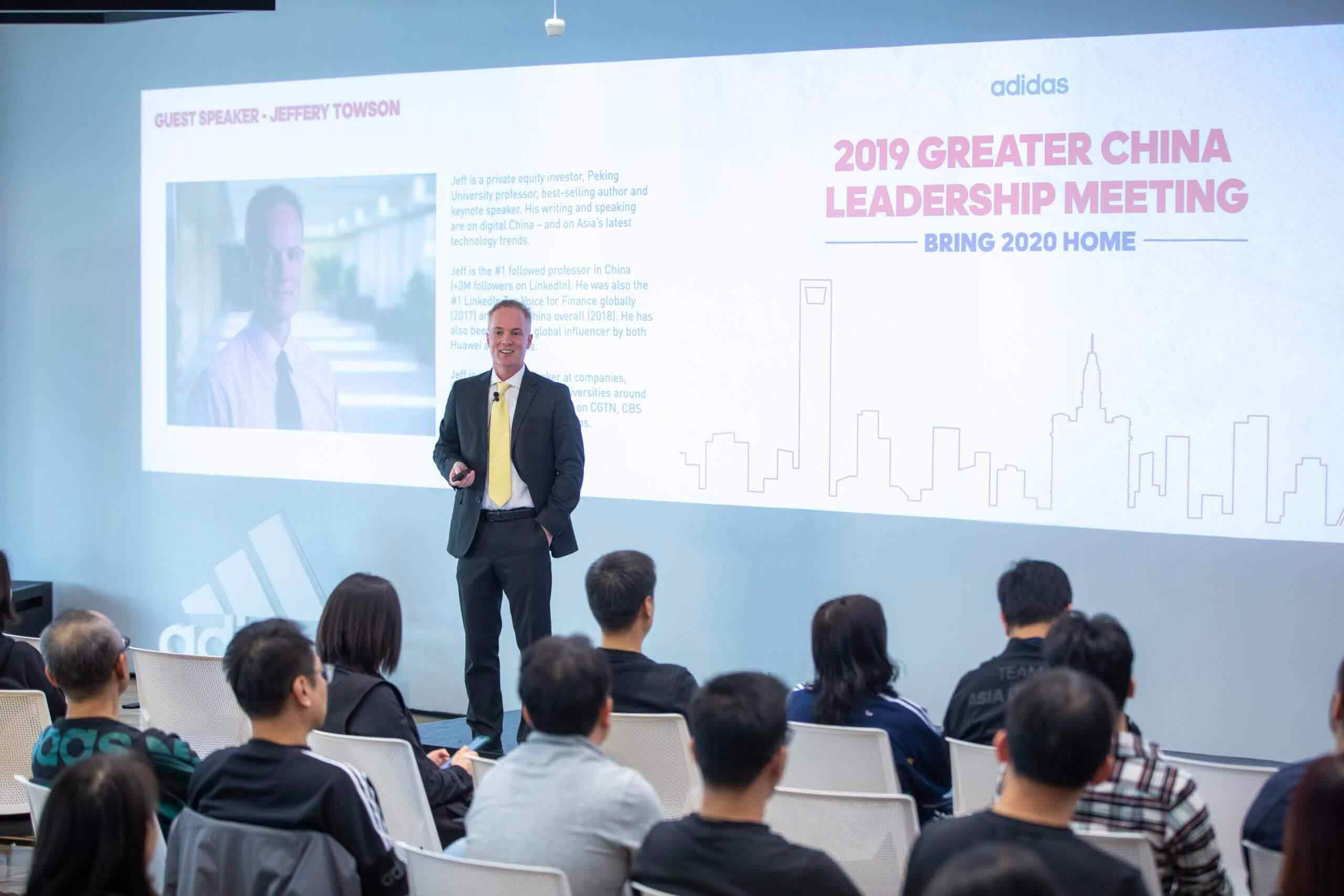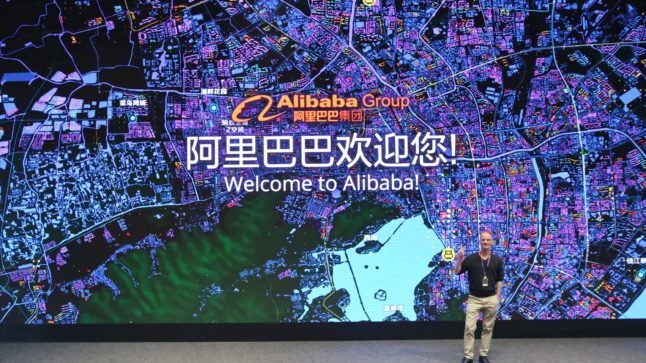In Part 1 (Why the #1 Business Solution to Coronavirus in China Is Live Streaming, Especially Taobao Live), I argued three big things are happening in digital China right now.
- Covid19 is radically altering the behavior of hundreds of millions of consumers (and businesses), resulting in what is being called the quarantine economy. Everyone is trying to move from in-person to digital interactions.
- This shift to digital interactions is supercharging and rapidly evolving China’s +1B person digital-first consumer network, a phenomenon I have written a lot about.
- The #1 go to solution is live streaming, especially Taobao Live and JD Live.
But this is the impact of coronavirus on the consumer side of digital China. It is also causing big changes on the operations and logistics side. In particular, it is accelerating the development of intelligent IoT logistics networks in China. And this is one the biggest priorities of both Alibaba and JD.
But before getting to this…
It’s worth noting how fast China logistics has been developing recently.
New Retail Was +50% About Restructuring Logistics Infrastructure.
New Retail was launched by Alibaba in 2017 as a grand new frontier in retail. The idea was to merge the online and offline assets of retail into one seamless, data-driven consumer experience. And supermarkets went first. Alibaba opened Freshippo / Hema prototypes with lots of new consumer experiences and business models – all under the banner of new retail.
In truth, new retail began as a solution to the difficulties of doing ecommerce with groceries. Book sales moved online over a decade ago. Electronics and appliances followed soon after. And apparel and lots of other categories have been slowly migrating online over time. But grocery stores in China and most other places were still stuck at about 1-2% online in terms of sales. Moving grocery stores online had been a long-standing problem.
And there are lots of reasons for this:
- The goods are perishable. Fruit, vegetables, milk, bread, meat, fish and such don’t last that long. You are constantly bringing in new items, stocking them, and then trying to sell before they expire. Complicated, short-lived inventory coming from supply chains that are increasingly global creates a lot of complexity and expense.
- Groceries also require fast and frequent deliveries. People buy groceries a few days before they consume the products. People just don’t accept 5 day delivery like for books.
- Grocery stores also have small margins, with operating profits of 3-5% (maybe). So there just isn’t a lot of efficiency to capture by doing things digitally.
All of this was a challenge. And it turns out that adding physical locations via new retail solved most of these problems.
Alibaba’s Hema / Freshippo opened +100 retail locations that were basically combinations of retail space, local service centers and logistics / on-demand delivery hubs. This effectively shifted inventory closer to consumers – and changed from a hub-and-spoke logistics model to a more distributed logistics network.
Alibaba has since added another +100 retail locations and acquired another 300-400 via M&A. So you can see they are basically building a national logistics infrastructure made up of centralized warehouses, distribution centers and about +1,000 new retail / logistics hubs. That was sort of the model for the future for national logistics circa 2018.
Alibaba and Cainiao Launch an Open IoT Platform for Logistics
From Daniel Zhang, Alibaba Group CEO:
“Only through building the digital infrastructure for logistics can we truly enable and push the industry forward…Digitizing parcels is not enough. We are working with partners to digitize warehouses, equipment, transportation vehicles [and] warehouse pickers’ handheld devices.”
Also from Alibaba:
“The IoT platform will allow partners and developers to share information and establish standard protocols to help logistics firms deploy IoT solutions at scale.”
Ok. So what does that mean?
I’ve been trying to dig into this for like a year. I keep asking to visit their new warehouses (and get politely refused). But my working understanding is they are basically upgrading the logistics network in three phases.
Phase One: Digitize, Standardize and Connect.
To digitize a logistics network you need to deploy a ton of new digital tools that capture all the information in the system. That’s mostly IoT. So you’re not just tracking the packages and inventory. You’re digitizing the operations in the warehouses. This includes:
- Building out smart equipment with an image-recognition functions.
- Adding near-field sensing systems
- Deploying acoustic-photoelectric systems
- Deploying robots in different scenarios
And basically putting sensors into everything. Cainiao has said they aim to connect 100 million smart devices to its IoT technologies in the next three years – including its connected devices, warehouse and delivery robots and algorithm-backed management systems.
And an important part of this is standardizing the interfaces. You need the protocols so that everything connects with everything else. Just like TCP/ICP for computers. And how all railroad tracks are the same width. You want it all to connect.
Phase Two: Open to Partners and Developers.
Once you digitize the system, capture the data and make it connected, you can then open it up to partners and developers. Not unlike how a smartphone has open data and APIs so all the millions of app developers can create programs. It’s not clear to me how open they are going to make it but the phrase I keep hearing is “help logistics firms deploy IoT solutions at scale.”
And this leads to…
Phase Three: Make it Intelligent.
So you have national logistics infrastructure that is digitized, connected and open to developers. What happens if you start to run AI/ML on it? And if you start to automate many of the activities? What would a smart IoT logistics network look like?
That’s a pretty cool idea.
And this is where the cloud plus AI and 5G come into play. If the network, warehouses, trucks, robots and drones all become smarter and possibly autonomous, how far can it go? And do you have the connectivity required for autonomous vehicles and logistics machinery?
Keep in mind, 5G has a distance problem. Yes, it is fast with low latency but it doesn’t go very far and it doesn’t go through walls. So you need to put routers everywhere. Like in every room in the office. And that is why it is so hard to do across a city. But this is something you can actually deploy today in controlled areas like logistics centers. So 5G should be deployed into this network fairly quickly. And this is an area for China, South Korea and Japan look to be in the lead.
Putting It All Together.
Imagine an increasingly intelligent and open IoT logistics network that covers all of mainland China. With its own developer ecosystem. And which can be used for increasingly sophisticated B2C and B2B services.
It’s a pretty cool idea.
JD is working on something similar. Their language is different but it’s the same basic idea. Here is some language about what they say they are doing:
- 5G and Industrial IoT in logistics
- Rapidly expanding fulfillment capabilities, operating approximately 600 warehouses as of June 30, 2019.
- Of an aggregate gross floor area of over 15 million square meters, approximately 2.5 million square meters are managed in this space under the JD Logistics Open Warehouse Platform.
- Now using 5G to move beyond current IoT and “create ubiquitous connectivity at scale”.
- Connectivity between all robots, systems and warehouses. With low latency, high speed and broad spectrum. Tons of simultaneous connections.
- With warehouses, robots and trucks all communicating, they anticipate reduced costs, route optimization, space optimization, more precision fuel consumption and smart dispatching.
- Plans for it to become an open platform, where the entire ecosystem benefits.
***
That’s it for today. Have a great day – jeff
——————
I write, speak and consult about how to win (and not lose) in digital strategy and transformation.
I am the founder of TechMoat Consulting, a boutique consulting firm that helps retailers, brands, and technology companies exploit digital change to grow faster, innovate better and build digital moats. Get in touch here.
My book series Moats and Marathons is one-of-a-kind framework for building and measuring competitive advantages in digital businesses.
Note: This content (articles, podcasts, website info) is not investment advice. The information and opinions from me and any guests may be incorrect. The numbers and information may be wrong. The views expressed may no longer be relevant or accurate. Investing is risky. Do your own research.

